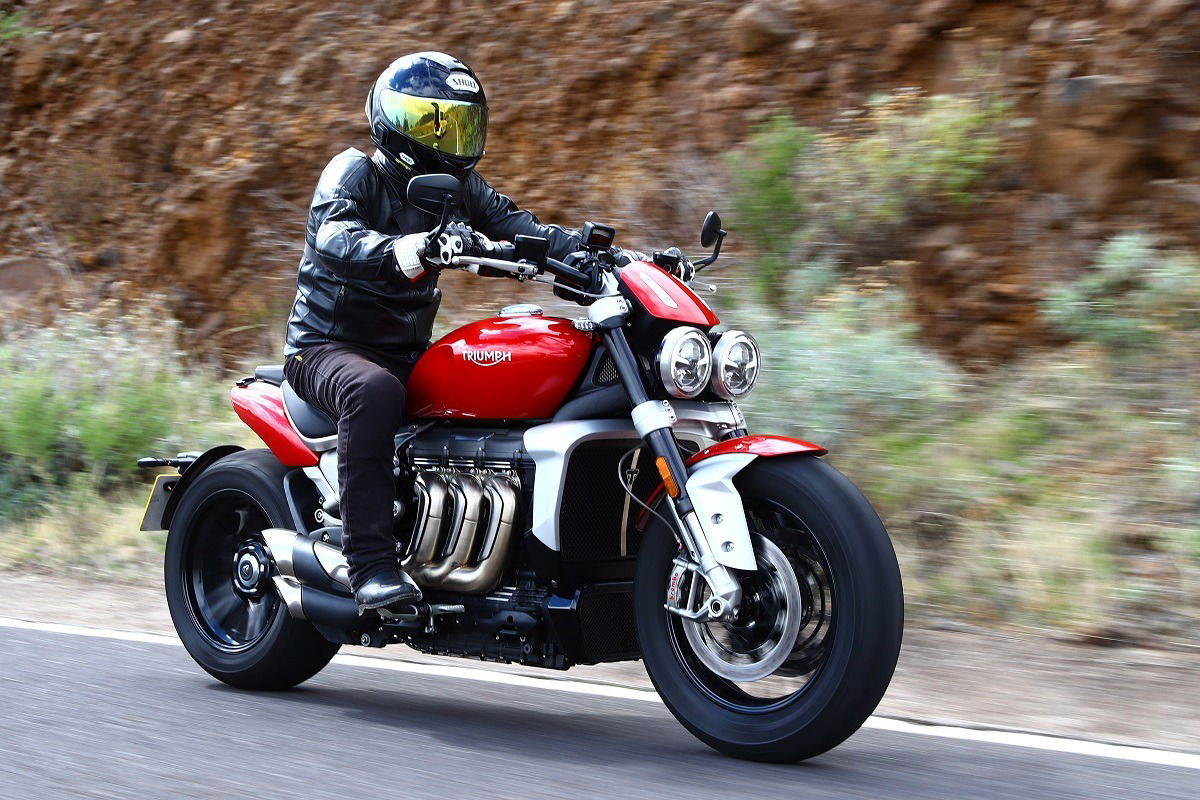How do you make a bike as big as the Triumph Rocket 3 handle so well?
Triumph Chief Engineer, Stuart Wood takes on a deep dive into the chassis of the new 2020 Triumph Rocket 3
.jpg?width=1600&aspect_ratio=16:9)
FEW motorcycles, both current and from history, can match the Triumph Rocket 3 in terms of spec, performance, and physical size.
But on that last point, I just want to dwell for a moment and have a little recap of the dimensions of the thing. It’s 294kg wet, has a 1677mm wheelbase, a 240-section rear tyre, and at its heart a mammoth, 2,500cc engine. Reading the specs and looking at the pictures, there’s really no way the bike should handle as well as it should.
Out on the open road or trickling through traffic, the Rocket 3 just goes where you want, when you want it to, with really a minimum of fuss for what is a very big bike.
.jpg?width=1600)
So, how did Triumph get the new Rocket 3 to handle like a beefed-up Speed Triple?
Without giving away all of the Triumph team’s secrets, the bike’s Chief Engineer, Stuart Wood, has taken the opportunity of an empty visitor centre at Hinckley (courtesy of the COVID-19 lockdown) to take us through how himself and his team went about creating the largest production motorcycle currently available.
If you’ve not already seen episode one of the video series, check it out by clicking here. In that video, Stuart took us through the Rocket 3’s immense engine, letting us know how they made it powerful, rideable and above all, emissions compliant.
For now, sit back, grab a brew, and enjoy some footage we don’t often get to see.
To check out our full review of the Triumph Rocket 3 from the launch in Tenerife, click here.
Sponsored By

Britain's No.1 Specialist Tools and Machinery Superstores
When it comes to buying tools and machinery, you need to know you're buying from specialists who know what they're talking about.
Machine Mart eat, sleep and breathe tools and machinery, and are constantly updating their range to give you the very best choice and value for money - all backed by expert advice from their friendly and knowledgeable staff. With superstores nationwide, a dedicated mail order department and a 24 hour website offering quality branded items at fiercely competitive prices, they should be your first choice for quality tools and equipment.


